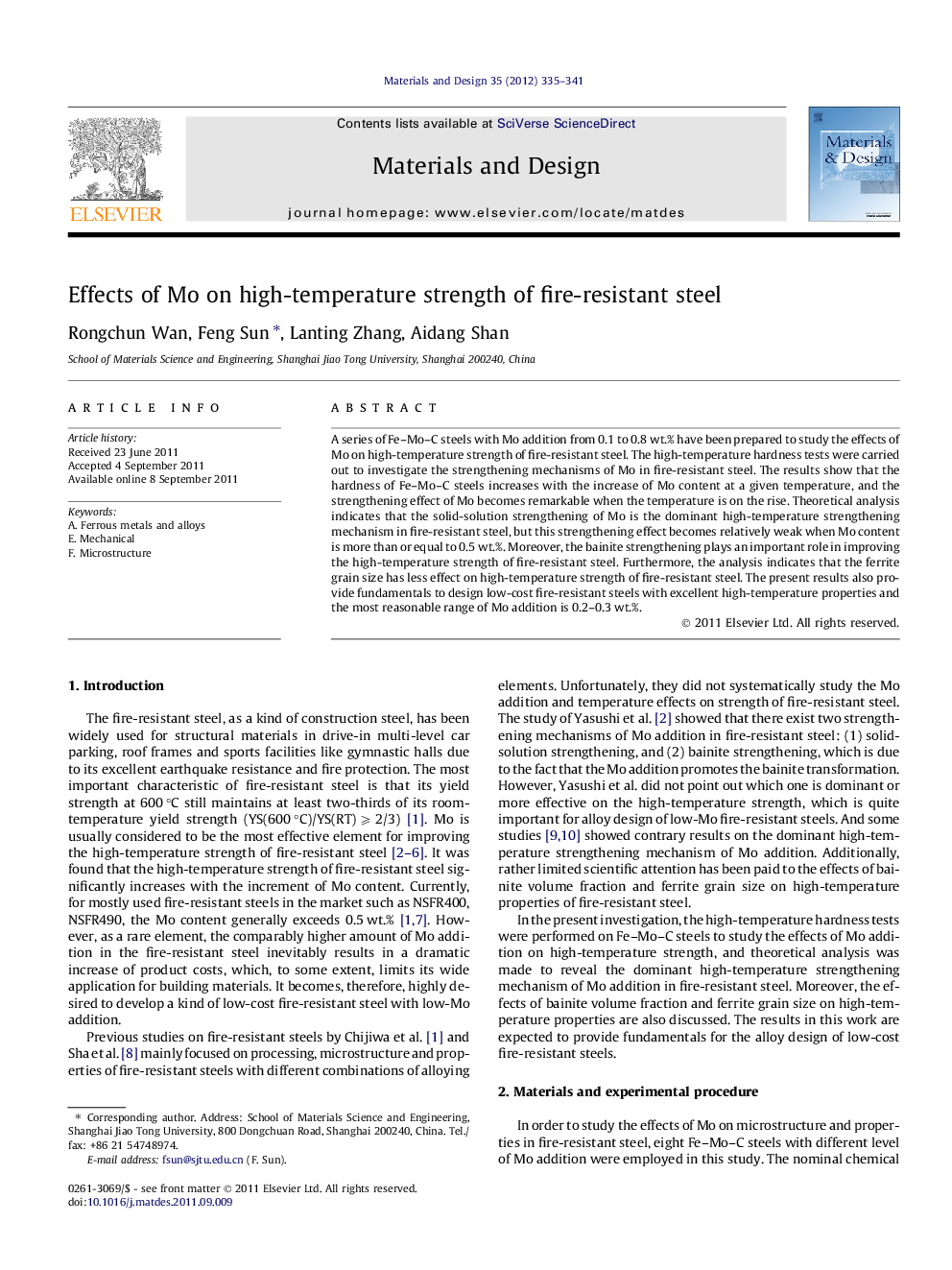| Article ID | Journal | Published Year | Pages | File Type |
|---|---|---|---|---|
| 830948 | Materials & Design (1980-2015) | 2012 | 7 Pages |
A series of Fe–Mo–C steels with Mo addition from 0.1 to 0.8 wt.% have been prepared to study the effects of Mo on high-temperature strength of fire-resistant steel. The high-temperature hardness tests were carried out to investigate the strengthening mechanisms of Mo in fire-resistant steel. The results show that the hardness of Fe–Mo–C steels increases with the increase of Mo content at a given temperature, and the strengthening effect of Mo becomes remarkable when the temperature is on the rise. Theoretical analysis indicates that the solid-solution strengthening of Mo is the dominant high-temperature strengthening mechanism in fire-resistant steel, but this strengthening effect becomes relatively weak when Mo content is more than or equal to 0.5 wt.%. Moreover, the bainite strengthening plays an important role in improving the high-temperature strength of fire-resistant steel. Furthermore, the analysis indicates that the ferrite grain size has less effect on high-temperature strength of fire-resistant steel. The present results also provide fundamentals to design low-cost fire-resistant steels with excellent high-temperature properties and the most reasonable range of Mo addition is 0.2–0.3 wt.%.
► The strengthening effect of Mo becomes remarkable when temperature rises. ► Dominant effect of Mo on high-temperature strength is solid-solution strengthening. ► Bainite strengthening plays an important role in improving high-temperature strength. ► Results provide fundamentals to design low-cost fire-resistant steels.
